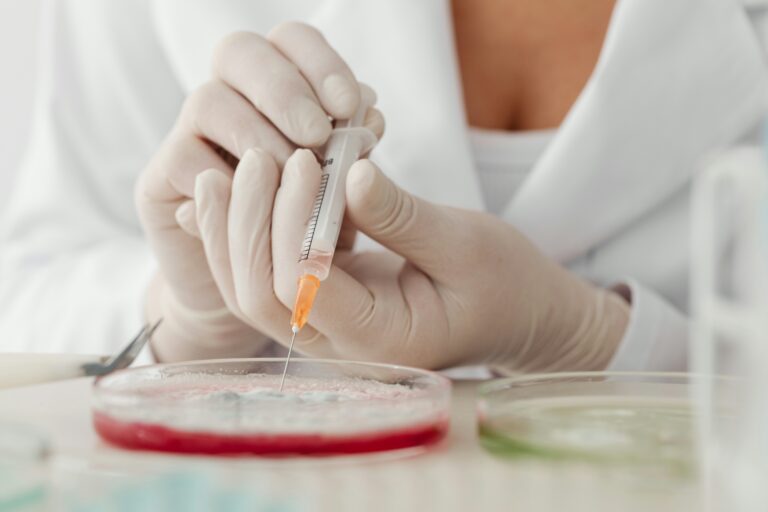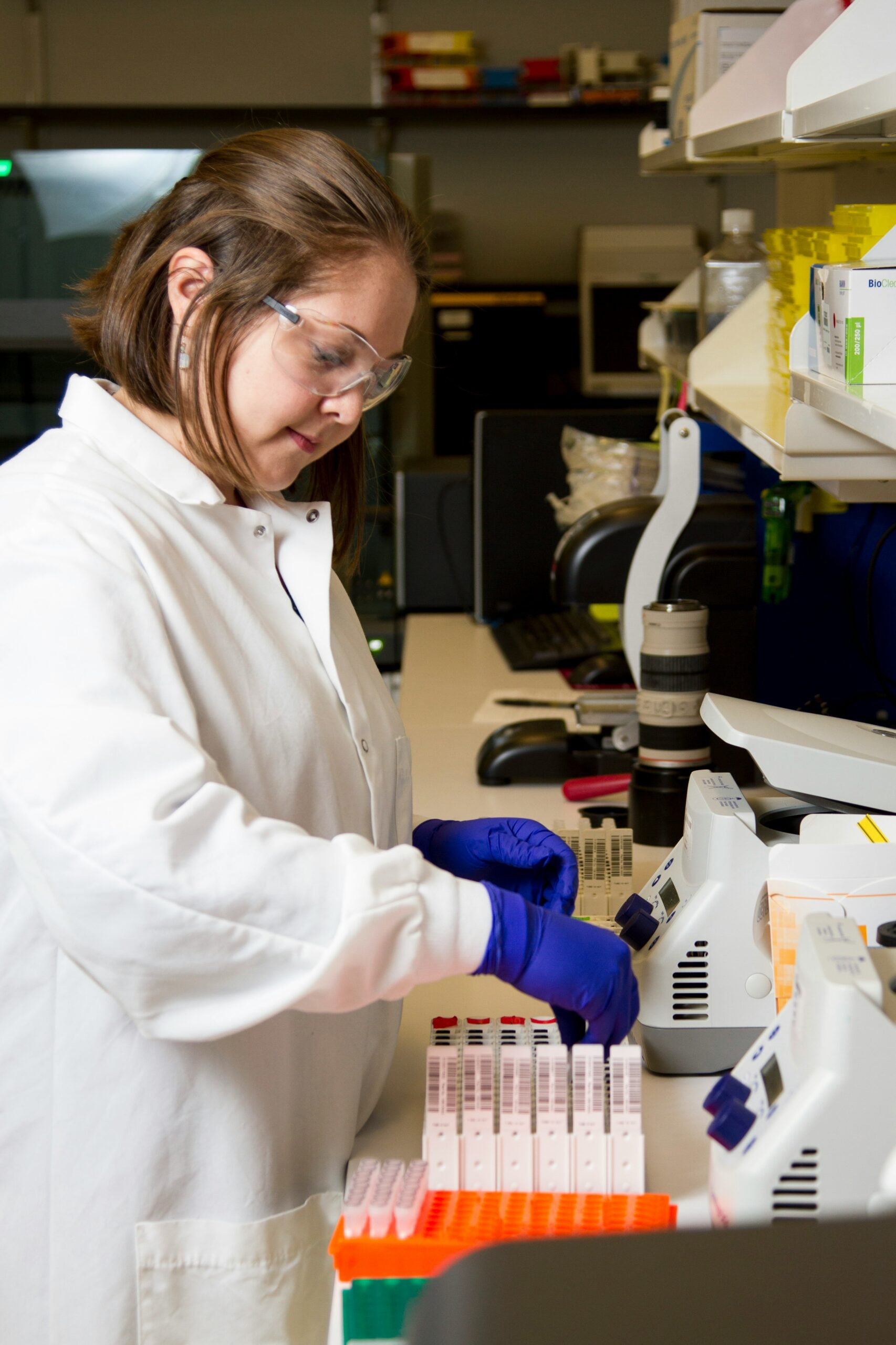When you have gone through loss before, you want to do everything in your power to reduce your risk of miscarriage. While genetic testing doesn’t hold any guarantees, it is a way to know the risk factors that could potentially impact your embryo and the health of your pregnancy. One of the first ways to gain more information is through Non-Invasive Prenatal Testing, or NIPT testing.
“NIPT testing is a blood test that screens for certain genetic conditions in the fetus during pregnancy. The test analyzes fragments of the baby’s DNA that are circulating in the mom’s blood stream and can be done as early as nine to ten weeks,” Dr. Kerry Krauss, MD, FACOG, said.
NIPT tests use a pregnant woman’s blood to detect any congenital abnormalities in your baby’s DNA. The reason you need to be closer to your second trimester to administer the blood test is it takes that long for some of your baby’s DNA to be mixed in with your own. If you do it too early, you won’t receive a conclusive result and you may have to go through the testing process again.
Remember, this isn’t a positive or negative result test, instead it’s a ‘low-risk’ or ‘high-risk’ test for some of the top genetic conditions that could impact your risk of miscarriage or baby’s survival outside of the womb. The best thing about NIPT testing is right in the name: it’s non-invasive, so it’s safe for you and your baby. NIPT aims to give you information about your baby’s health during prenatal care.
NIPT started in 2011 in Hong Kong. Only a few months later, it was introduced commercially in the United States. Before NIPT, parents would rely on tests like amniocentesis to determine if their baby had a genetic or chromosomal abnormality. But since an amniocentesis involves inserting a needle into the mother’s uterus, it was considered dangerous, even slightly increasing the chance of miscarriage. NIPT tests reduced these risks while still providing accurate results.
Here, what you need to know about genetic testing to decide if it is a good decision for you, your family and your needs.
- How NIPT Works
- Conditions Screened by NIPT
- NIPT Results and Follow-Up
- Benefits and Limitations of NIPT
How NIPT Works
The NIPT test is just like any other blood test you’ve taken, usually from your arm. It’s a quick and easy process that requires no special preparation. But unlike blood tests you’ve had before you were pregnant, this time your blood is mixed with small DNA fragments of your baby’s blood, which is what the test looks for to determine high or low risk genetic conditions.
After your blood sample is collected, it’s sent to a lab to analyze the DNA fragments and look for any chromosomal abnormalities. Since you can do the test as early as ten weeks, it gives you so much time to prepare for any information you receive from the results.
“Learning this information early allows for peace of mind as well as personalized pregnancy management by expecting parents and healthcare providers,” Jennifer Hoskovec, a certified genetic counselor and the VP of medical affairs at BillionToOne said.
Managing any chromosomal abnormalities in your baby can be terrifying, but having the time to process and understand your options can help. NIPT is roughly 99 percent accurate when it comes to detecting Down syndrome. It’s slightly less, but still extremely well, at detecting other abnormalities incompatible with life, like trisomy 18 or 13. Remember that NIPT is just a screening tool at the end of the day. You’d need an additional diagnostic test to confirm what NIPT finds.
Conditions Screened by NIPT
As we’ve mentioned, NIPT tests for a few different abnormalities your fetus could have. The number of conditions NIPT tests for can vary depending on the specific test and your healthcare provider, but most commonly, it screens for the following common chromosomal abnormalities that most people are familiar with:
- Down syndrome: This is probably the most common condition that NIPT can test for. It’s caused when an abnormal cell division causes an extra partial or full copy of chromosome 21.
- Trisomy 18: This is a disorder where babies are born with one more copy of chromosome 18 than they should be. It can lead to heart defects, facial abnormalities, growth problems and poor survival rate.
- Trisomy 13: This occurs when chromosome 13 is partially or fully copied. This can cause craniofacial abnormalities, brain development issues, heart defects and a short lifespan.
NIPT can also screen for sex chromosome abnormalities. Suppose your female fetus has only one X chromosome or your male fetus has an extra X chromosome. In that case, it can lead to physical development issues and reproductive health problems. But many individuals with these anomalies go on to live normal lives with the right treatment.
At this point, you might wonder what the difference between screening and diagnostic genetic testing is. Screening is essential, looking for signs that something might be wrong. However, it can’t give you the official ‘yes’ or ‘no’ you want. To get that answer, you’d need a diagnostic test.

NIPT Results and Follow-Up
Knowing what your NIPT results mean after you get them back can help you decide on the next step for you. Getting a low-risk result is exactly what it sounds like: there’s a very low chance your baby has any of the chromosomal abnormalities the NIPT screened for. (But remember, low risk does not mean a zero percent chance. It’s 99 percent accurate, but errors do happen. If you’re concerned, speak with your OB/GYN.)
A high-risk result means your baby has a higher chance of having a chromosomal abnormality. It doesn’t mean your baby definitely has the condition , but there’s a higher chance they do. If you receive a high-risk report from the NIPT, your OB/GYN will discuss next steps, which usually includes an ultrasound and further testing that may be more invasive, like an amniocentesis.
It is important to note that NIPT testing can create false positives and negatives, as with any test. A false positive means that the test showed a risk for a condition your baby does not have. A false negative means that the NIPT test showed no indication of an abnormality, but they actually did have one. Think of NIPT testing as one part of a puzzle. It’s one of the pieces, but it’s not the final result.
Benefits and Limitations of NIPT
For many expecting mothers, there’s no reason not to say ‘yes’ to to the NIPT testing. The benefits often outweigh any concerns: it’s non-invasive, making it safe for the baby and mother. You can take the test in your first trimester to detect any abnormalities that may be present whereas other screening methods can’t be used until the second trimester, giving you time to prepare and consult with your healthcare provider.
Dr. Krauss also explains that it has an incredibly high accuracy rate compared to sequential or quad screenings. Another benefit is it can actually determine the sex of your baby, allowing you to plan a gender reveal party with your loved ones. With these benefits in mind, remember that NIPT testing does have some limitations. The test can’t detect all genetic conditions. For conditions like cystic fibrosis, you might need other tests. .
NIPT testing is a great way to see if your baby has chromosomal abnormalities. It allows for early detection for things like Down syndrome, trisomy 18 and trisomy 13. It’s non-invasive and completely safe, and quick, for you.
“Due to the high sensitivity of NIPT results, patients and families receive the most accurate information, helping them decide whether to proceed with diagnostic procedures like amniocentesis,” Hoskovec said. “Such procedures can often cause added stress and anxiety for expectant parents.”
Always consult your doctor about taking these steps. They can help you understand what it means for your journey and baby. We know this can feel scary, but prenatal care like this is key. Don’t forget to ask plenty of questions and choose what feels right for you and your baby.
Author
-

Esha Minhas is a third-year student at Northeastern University studying Journalism and Political Science. She's currently the editorial and social intern for Mila & Jo Media. Esha is also the Deputy Sports Editor for The Huntington News and covers Northeastern men's hockey. When she's not busy with work or school, you can find her at the gym, baking for her friends and family and watching anything sports related.
View all posts





